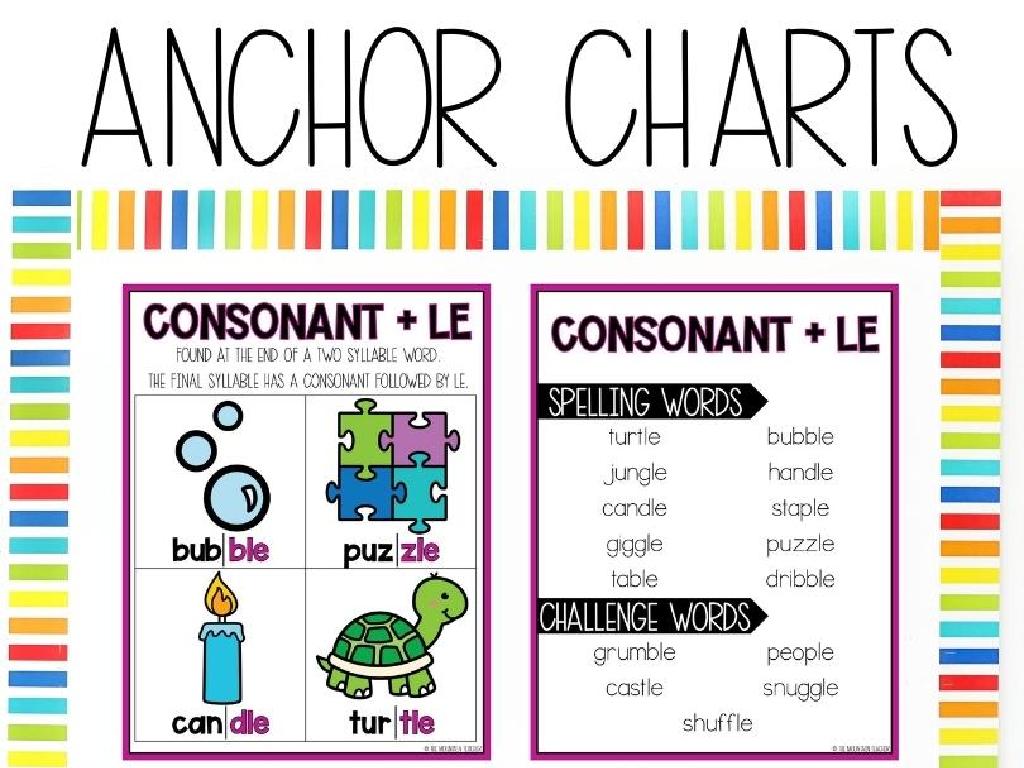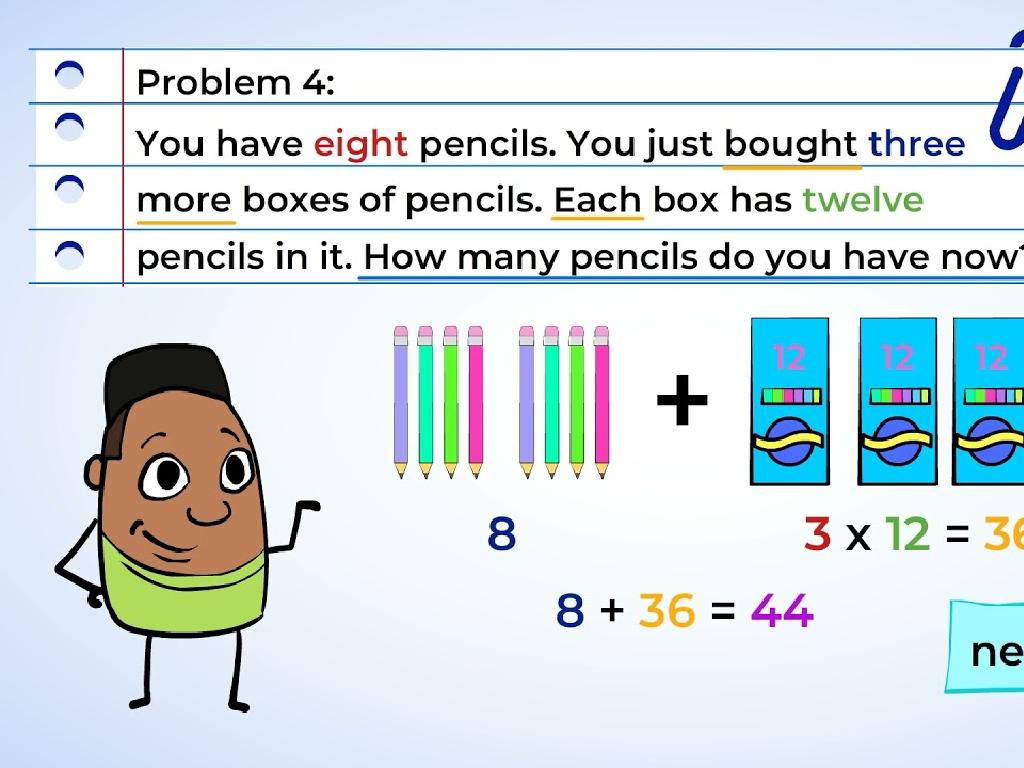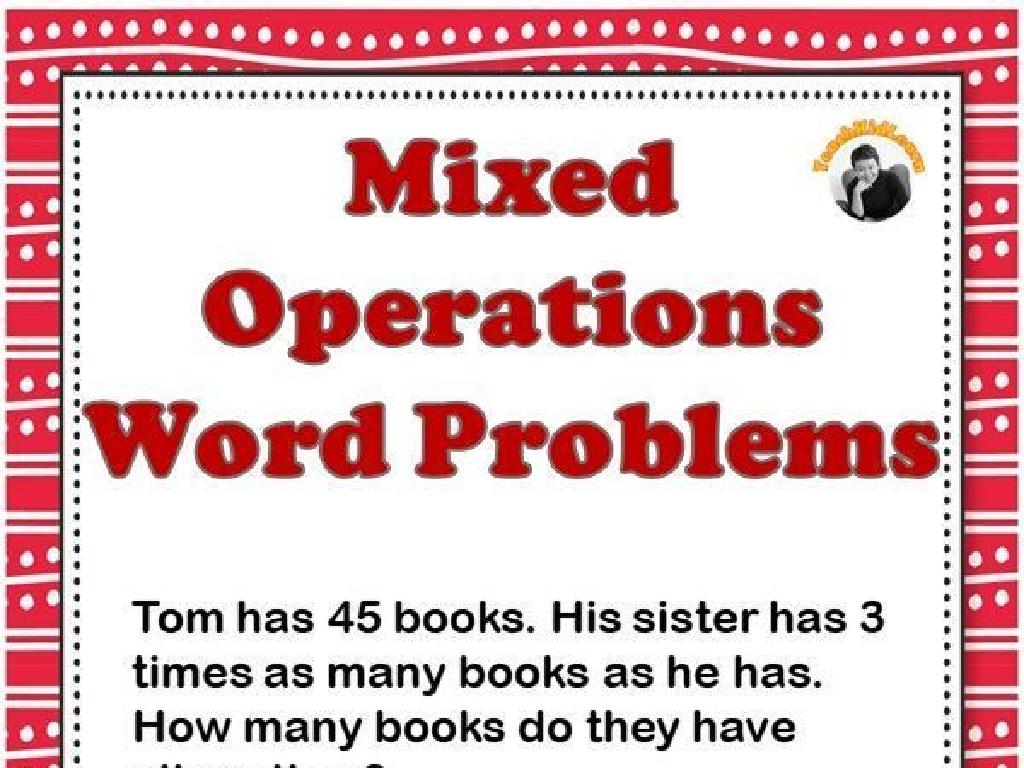Identify Materials In Objects
Subject: Science
Grade: First grade
Topic: Materials
Please LOG IN to download the presentation. Access is available to registered users only.
View More Content
Welcome to Materials!
– Today’s topic: What are materials?
– Materials make up everything
– Your desk is wood, your bottle is plastic
– Examples: Wood, plastic, metal
– Chairs can be wood, bikes are often metal
– Why materials matter
– Different materials for different uses
|
This slide introduces the concept of materials to first graders. Begin by explaining that materials are the substances things are made from. Use familiar objects from the classroom to illustrate different materials, such as a wooden desk or a plastic water bottle. Discuss how different materials are used for different things because of their properties, like strength or flexibility. Encourage the children to look around and name objects and their materials to reinforce the concept. The goal is to make them aware of the variety of materials in their surroundings and understand that the choice of material is important for the object’s function.
Exploring Everyday Objects
– Observe objects around you
– Guess the materials used
– Common materials: wood, plastic, metal, glass, fabric
– Examples: Wooden chair, plastic bottle, metal spoon, glass window, fabric doll
– Understanding object composition
– Learn what makes up the things we use daily
|
This slide is aimed at sparking curiosity in first graders about the world around them. Encourage the students to look at various objects they encounter every day and think about what materials these items are made from. Discuss the common materials like wood, plastic, metal, glass, and fabric, and provide examples of each. This activity helps students understand that everything they touch and use is made from different materials and has specific properties. It’s a foundational step in recognizing the diversity of materials in their environment and the importance of each material in the construction of objects they interact with.
Exploring Wood: A Material from Trees
– Wood is from trees
– Used for tables and pencils
– Tables to sit at, pencils for writing
– Touch wood, feel its texture
– Is it rough or smooth? Hard or soft?
– Discuss the texture of wood
|
This slide introduces students to wood as a common material derived from trees. Emphasize that wood is all around us and is used to make many things we use every day, like furniture and writing tools. Encourage the students to physically touch an object made of wood to understand its texture. Ask them to describe how it feels is it rough or smooth, hard or soft? This tactile activity helps students connect the concept of materials to real-world objects, enhancing their understanding of where materials come from and their properties.
Exploring Materials: Plastic
– Plastic is man-made
– Used for toys and bottles
– Examples: Lego bricks, water bottles
– Find a plastic item
– Look around the classroom or at home
– Is it hard or soft?
– Feel and bend the item to decide
|
This slide introduces students to the material ‘plastic,’ emphasizing its synthetic nature and versatility. Start by explaining that unlike wood or metal, plastic is not found in nature but created by humans for various uses. Show examples of plastic items such as toys and bottles to make it relatable. Encourage students to engage in a hands-on activity by finding a plastic object in the classroom or at home and examining its properties, such as texture and flexibility. Discuss how plastic can vary in hardness and softness, and why that might be useful for different objects. This activity will help students understand the concept of materials and their properties through direct interaction.
Exploring Metals
– Metal is a strong material
– Metals make coins, cans, cars
– Everyday items like pennies, soda cans
– Hold a metal object
– Feel the weight and texture
– Is it heavy or light?
– Compare with other materials
|
This slide introduces students to the concept of metal as a material and its common uses. Emphasize the strength of metal and its prevalence in everyday objects that the students are familiar with, such as coins, cans, and cars. During the class activity, provide various metal objects for the students to touch and feel, encouraging them to notice the weight and compare it to other materials they have studied. Ask them to describe the metal – is it hard or soft? Shiny or dull? This tactile experience will help solidify their understanding of metal as a material. Prepare to facilitate a discussion on why certain objects are made from metal and the properties that make metal suitable for these uses.
Exploring Materials: Glass and Fabric
– Glass is see-through
– Glass can break easily
– Fabric is made of threads
– Threads are woven together to make fabric
– Fabric is used for clothes
– We wear fabric every day
|
This slide introduces students to two common materials: glass and fabric. Explain that glass is a material that we can look through and is often used to make windows and cups. However, it’s important to handle glass carefully because it can break easily. Fabric, on the other hand, is soft and flexible, made from many threads woven together. It’s used to make things we wear like shirts and pants. Encourage students to explore these materials by looking through a glass window to understand its transparency and by touching different pieces of fabric to feel the texture. Ask them to describe the differences between glass and fabric. This will help them to understand the properties of materials in the objects around them.
Material Match Game
– Let’s play a matching game!
– Match objects to their materials
– Example: A water bottle is made of plastic
– Are you ready to find matches?
– Have fun learning materials!
– Games make learning about materials exciting
|
This slide introduces a class activity designed to help first graders learn about materials through a fun matching game. The objective is to match everyday objects to the materials they are made from, such as wood, plastic, metal, or fabric. Teachers should prepare a set of common objects and pictures or flashcards of the materials. During the activity, students will select an object and then choose the correct material card that matches it. This interactive approach reinforces their understanding of materials in a tangible way. Teachers can facilitate the game by providing hints and encouraging students to explain their choices. Possible variations of the game could include grouping objects by material, sorting objects by texture, or even a scavenger hunt to find objects made of specified materials around the classroom.
Class Activity: Material Hunt
– Let’s go on a Material Hunt!
– Find objects made of different materials
– Look for wood, plastic, metal, glass, fabric
– Draw or list your findings
– Identify the material of each object
– Is it wooden, plastic, metallic, glassy, or fabric?
|
This activity is designed to help students identify and categorize objects based on the materials they are made from. It encourages observation and critical thinking. As a teacher, facilitate the activity by guiding the students around the classroom and helping them to identify objects made of wood, plastic, metal, glass, and fabric. Provide drawing materials or a worksheet for them to record their findings. For example, a wooden desk, a plastic ruler, a metal paperclip, a glass window, and a fabric curtain. After the hunt, discuss why certain materials are used for specific objects and the properties that make them suitable. This will help students understand the practical application of materials in everyday life.






